When I was a kid, my dad had a Charter Arms Undercover .38 Special revolver that served as a faithful road trip companion. It resided in a homemade scabbard he’d fashioned from an old sheepskin lined, leather house shoe. It rode unnoticed between the seat rail and transmission hump on the floorboard of his International Scout Traveler. At home, I would often ask to see it- and he was always good to oblige me. He would retrieve it from his closet, pocket the Frontier JHP’s, and hand it to me with the cylinder open. He was patiently watchful as I handled the serious little revolver.
One of the first handguns I purchased when I was old enough to do so was a Charter Arms Target Bulldog .44 Special. Staying at my folk’s house for a few days around Christmas, I bought it used in a gun shop in Las Cruces, NM. Small town patrolman wages in 1990 left me with little spare cash; but the Bulldog was a bit weathered and had been there a while. The proprietor knocked a little off the price and let me have it for 150.00. That lightweight big bore became my “luggage” gun when I was flying anywhere. I wouldn’t be out a great deal if misfortune struck, but it was a dependable tool for the job. I trusted my life to it while far from home on several occasions. As I write this, it occurs to me that the blue-collar revolvers of Charter Arms provided security and comfort to two generations of my family, like they have for countless others.
Out of the Gate
About six years ago, the team at Charter Arms released a unique revolver. Dubbed the Professional, it featured a 3” barrel and was chambered in .32 H&R Magnum.
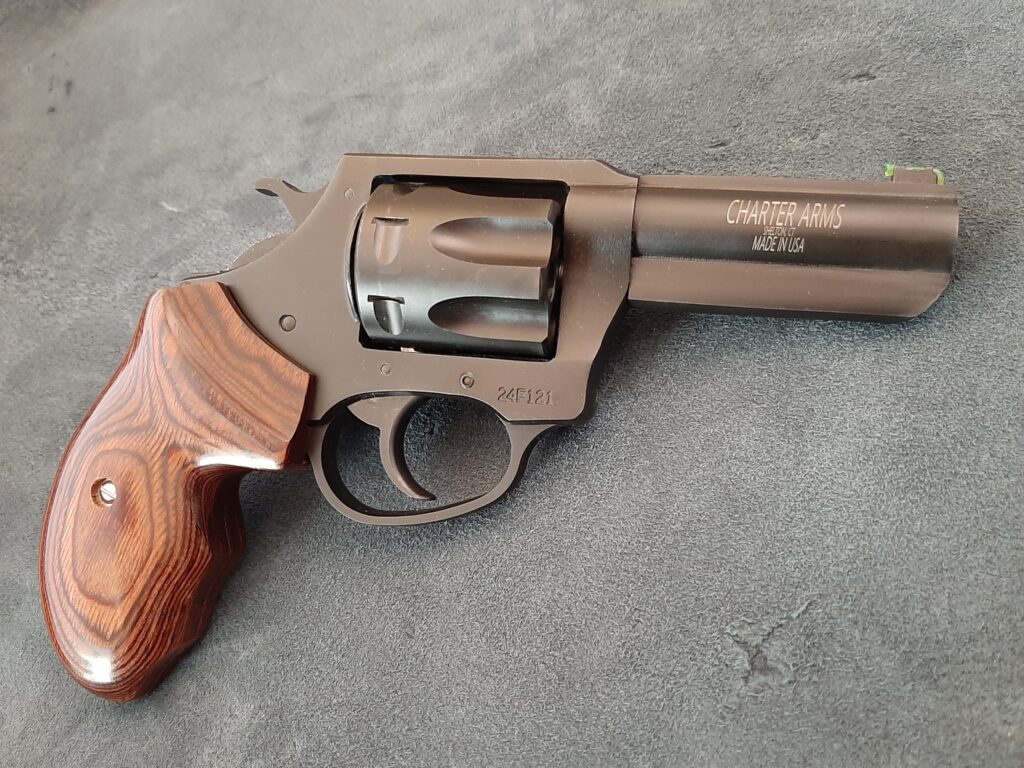
The .32 Mag is enjoying a renewed wave of interest right now, but it was an unexpected release by Charter back then. The gun was finished in black nitride and shipped with smooth wooden grips. It had a green fiber optic front and a fixed notch rear sight.
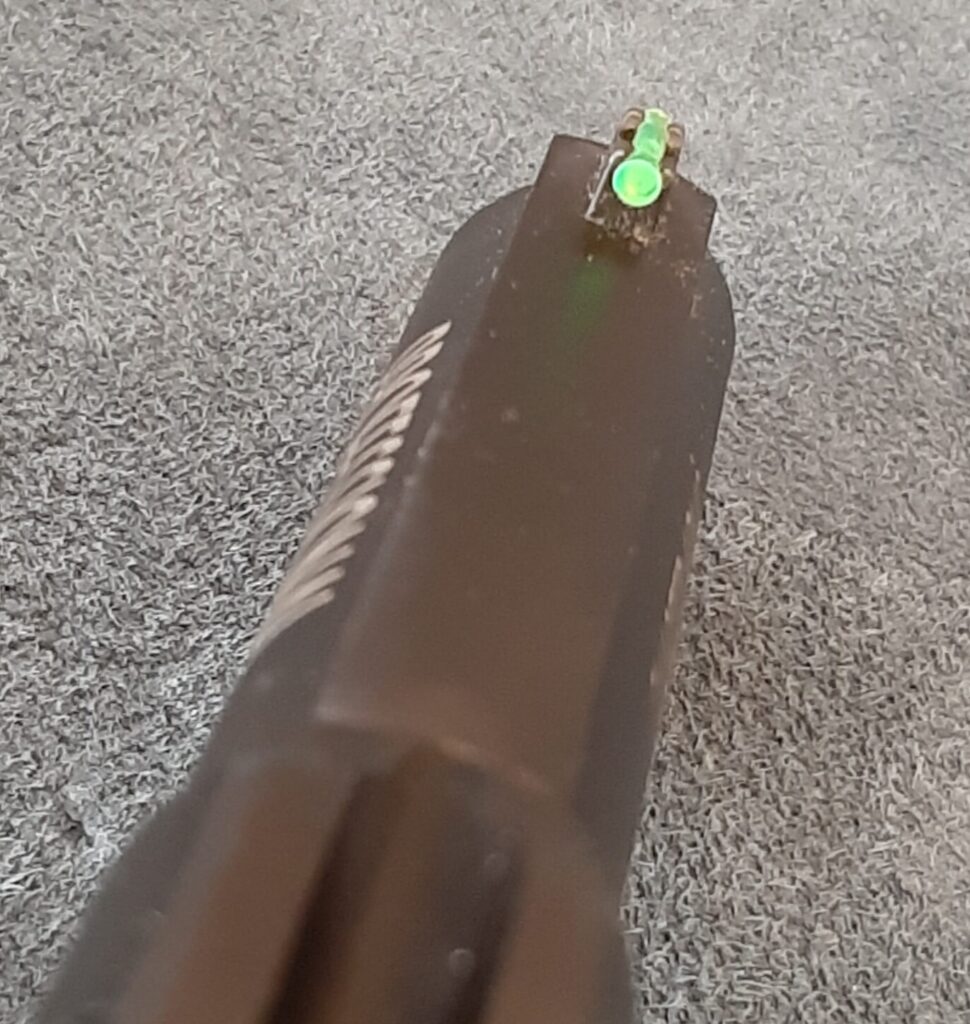
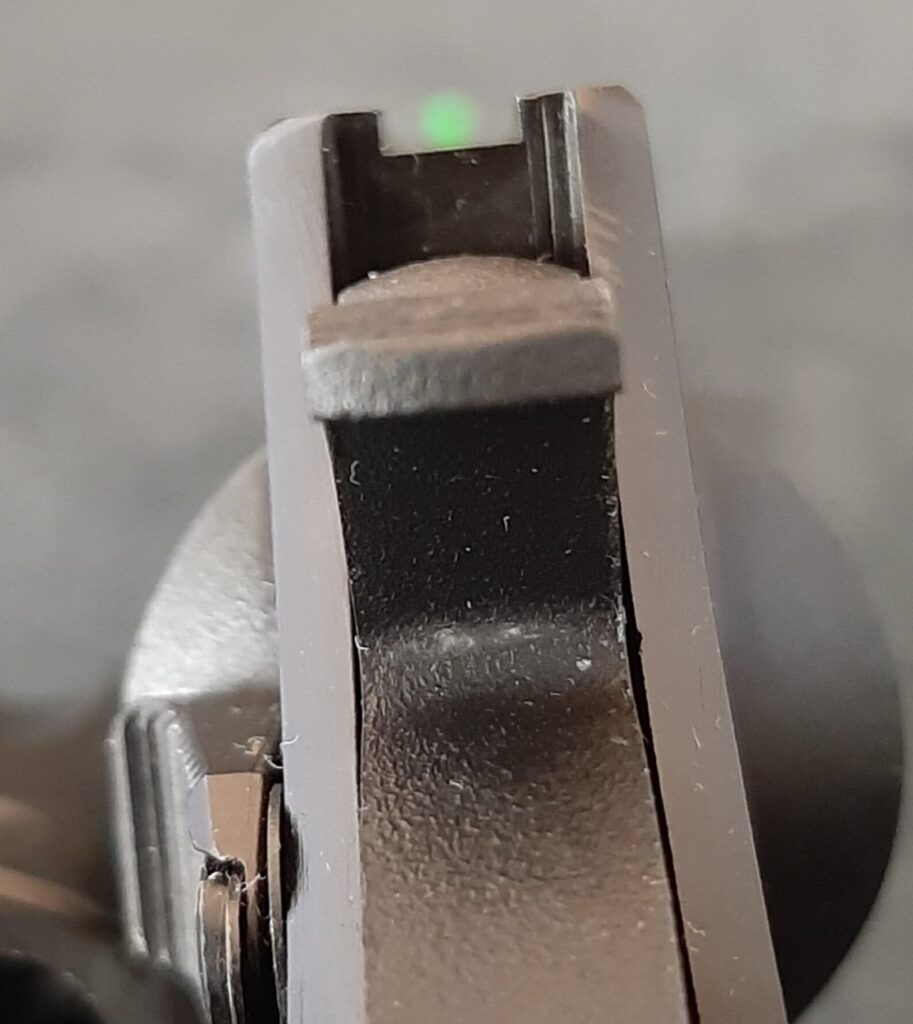
The cylinder yielded seven rounds of capacity in the .32 chambering. The Professional created a buzz when it came out, getting favorable reviews in the gun press. Sightings were few and far between in the wild- I recall seeing only one under glass briefly in a local shop around 2020.
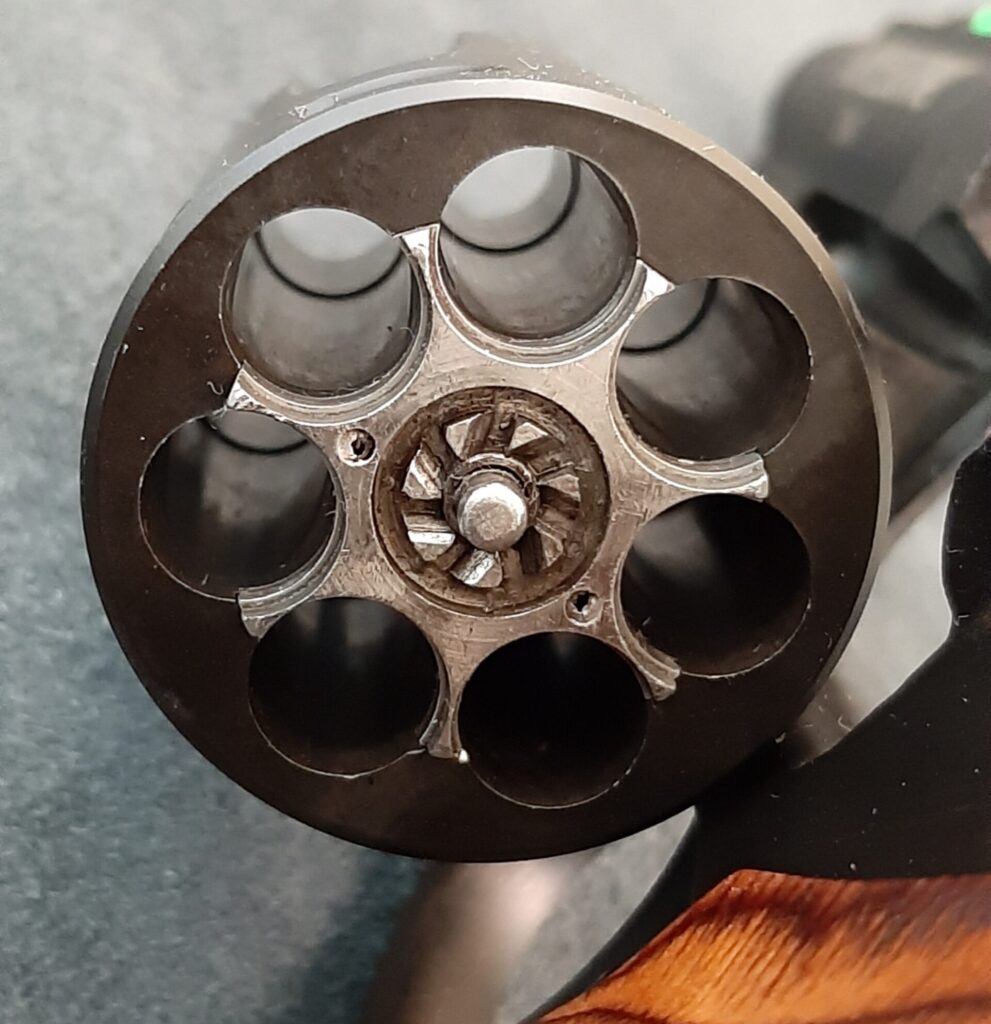
Mike and I had discussed the Professional here and there in the last few years, both of us potential fans. We were beginning to think the gun had been discontinued even though it remained on Charter Arms’ website. Late last year, Mike was contacted by an associate, Joel Harris, on behalf of Charter Arms. Harris inquired about Mike having any desire to test Charter guns for RevolverGuy, and soon after Harris had a Professional headed my way.
Hands On
The Charter shipped from Connecticut in a padded plastic hardcase and arrived at my FFL in November. Removing it from the packaging, the gun appeared to be about the same size as a Taurus 856 Defender. Charter lists it at 22 ounces, it weighed 23.2 ounces empty on my scale with the “backpacker” wooden grips. The grips were smooth and attractive, appearing to be laminate. They fit the frame well, covered the backstrap, and allowed purchase to all my fingers. They felt good in my hand.
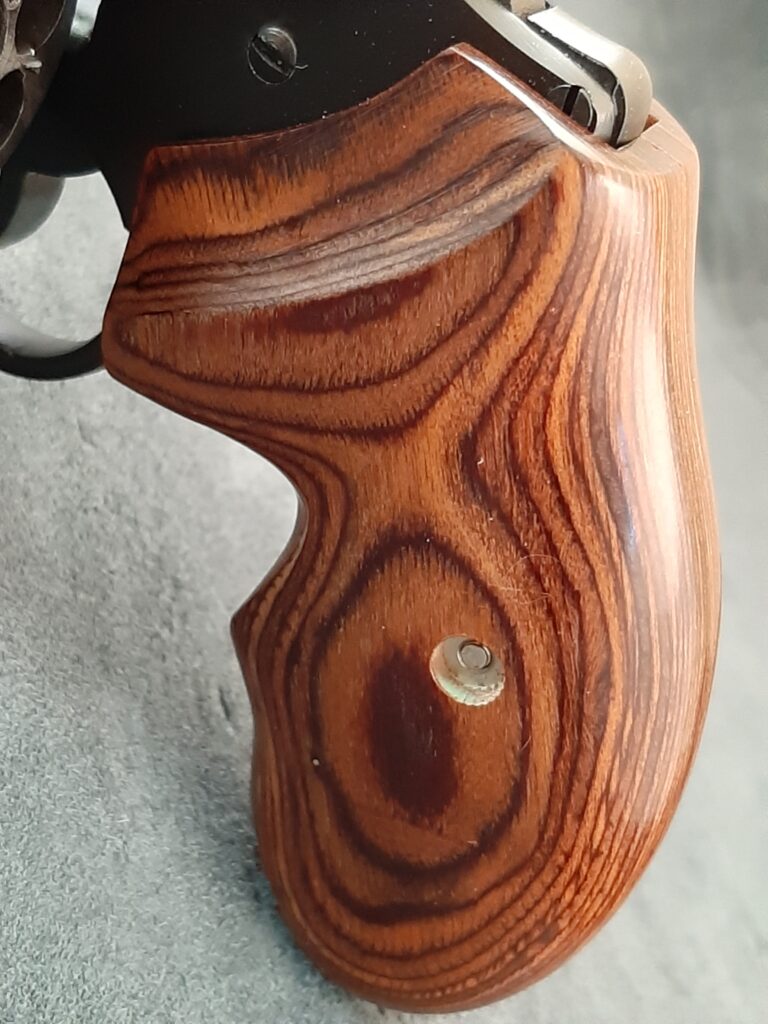
All metal surfaces were finished with Black Nitride, giving the gun a pleasing non-reflective matte hue. Branding was simple; the serial number was engraved on the right side of the frame in front of the trigger guard. The right side of the barrel was laser engraved with “CHARTER ARMS Shelton CT Made in the USA”, The left side with “PROFESSIONAL .32 MAG”. The barrel had a full length underlug protecting the ejector rod and ending with a smooth radius towards the muzzle. The cylinder was fluted with a nice bevel at the front of the high points between the flutes.
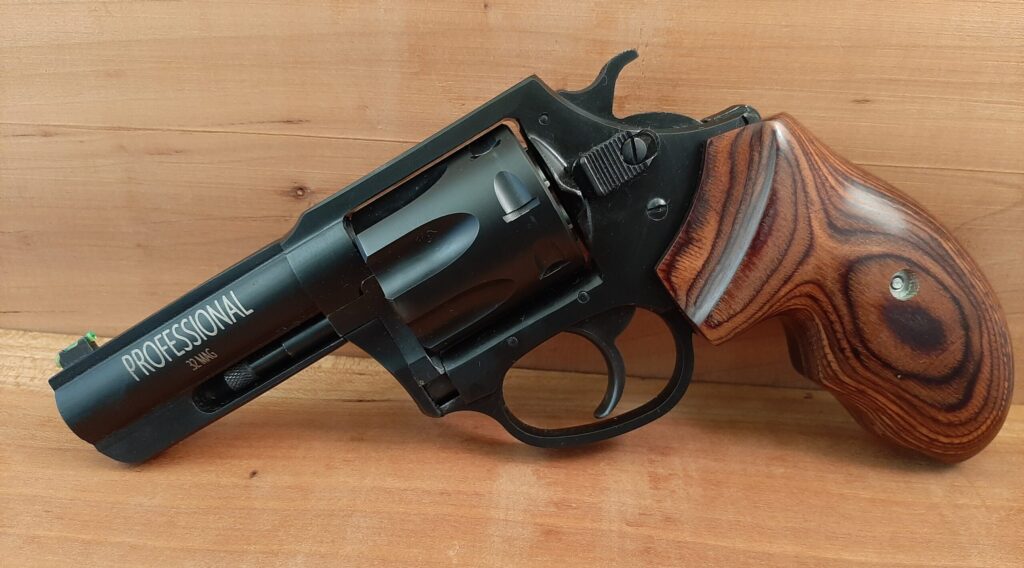
The cylinder stop relief cuts indicated that the cylinder rotated clockwise. The thumbpiece (Charter refers to the part as a cylinder latch) was built up at the front and cut with vertical serrations for traction. Forward pressure unlocked the cylinder and allowed it to open. The ejector rod had a spring-loaded collar and slightly enlarged tip which was knurled on the sides and smooth on the end. The ejector rod provided .675” of throw. The operation of the cylinder latch and the travel of the ejector rod were both somewhat stiff, they felt like they needed to break in. Locking the cylinder back into battery was likewise stiff. The lockup on the cylinder was snug and solid when checked with the trigger pinned to the rear. The cylinder rolled smoothly on its axis when spun and the ejector rod ran true.
The green fiber optic sight stood out pleasingly in daylight. It was .133” wide and stood .170” tall at the top of the “Lite Pipe” rod. The rear notch cut was shallow and very wide at .180”. Even though the sights were a bit smaller than optimal, the bright front and wide rear made them quick to pick up. The trigger was smooth faced and well-shaped, the hammer spur was serrated. The width on both parts was .305”.
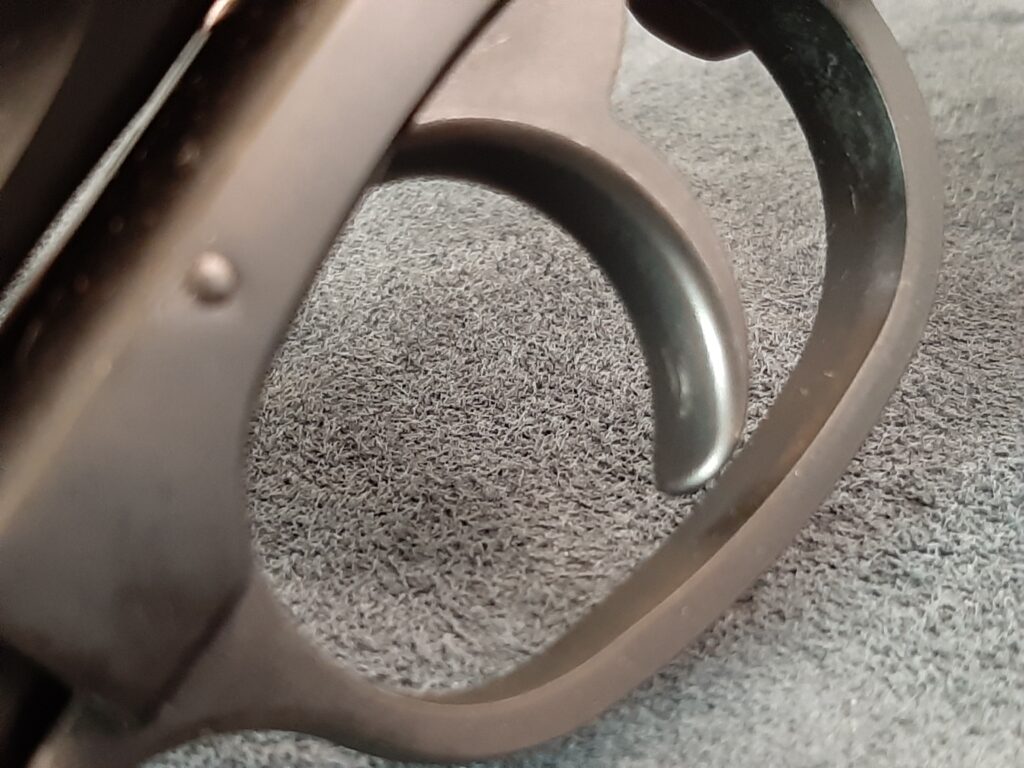
The firing pin was frame- mounted and protected by a hammer block safety. Dry firing the gun revealed a decent trigger pull. It was a bit stagey when pulled slowly, but smooth when rolled through with purpose. Measuring it on a Lyman gauge showed an average of 11.35 pounds, occasionally, a pull would run heavier. I rarely cock a double action revolver to single action in live fire, but the single action pull on this one measured a fabulously crisp 3.1 pounds.
Live Fire
I made it to the range in early January with what .32 H&R and S&W Long ammo I had on hand. I decided to start at 10 yards based on the likely mission of the gun. First up was Double Tap’s 60 gr. solid copper HP that shot to the sights of the 432 UC. The 60 gr. bullets gave a tight group at an average of 1319 fps, they impacted 3 inches below the point of aim at 10 yards- the windage was right on.

Hornady’s 80 grain Critical Defense grouped 2 ½ inches low. Federal’s 85gr. JHP hit 1 ¾” low, the same makers 95 grain SWC printed 1 ¼” low. A 100-gr. cast coated RNFP handload in .32 Mag cases running 923 fps struck 1 inch low. S&B’s .32 Long wadcutter exited the 3” barrel at a leisurely 688 fps average and impacted an inch and a half low. The .32 Long wadcutter recoil was so light it was borderline comical. A faster stepping 98 grain coated wadcutter handload (1019 av. Fps) impacted just under an inch below the sights. Double Tap’s 120 gr. Hard Cast Solid performed like it was custom loaded for this gun. It averaged 1012 fps and put all five at the point of aim in the B-8 x-ring, 3 of them touching. Velocity was a bit inconsistent, but it didn’t affect accuracy much (if at all).

I had only brought 8 of the DT 120HC’s with me, I loaded the remaining 3 and shot them from 15 yards as fast as I could find the sights. They hit at the point of impact into about 3 ½”. This round would make an excellent trail load, giving deep penetration from the little gun.
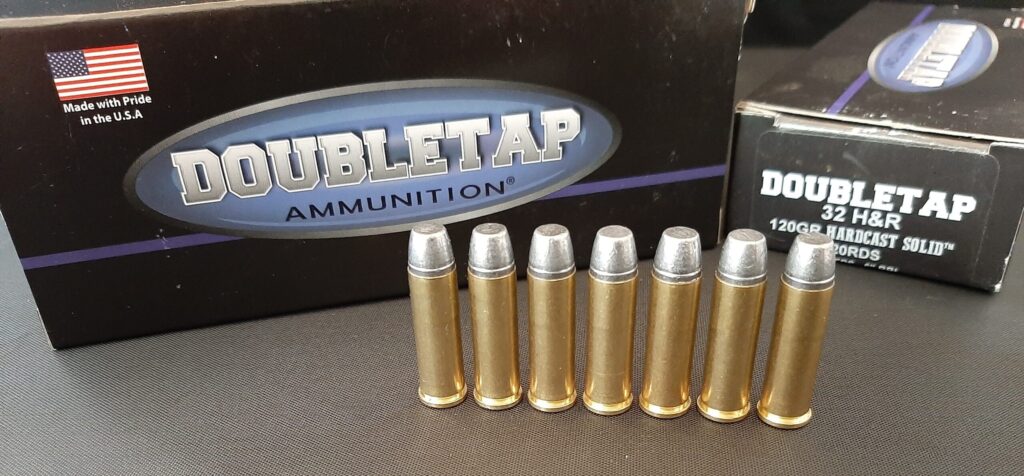
I burned what ammo I had left shooting failure drills on an IDPA target from 5 to 10 yards. 63 rounds on that trip- 45 .32 Mag, 18 .32 Long. I was pleased with the Professional’s performance on its maiden voyage.
Load Selection
I had some 100 grain Hornady XTP’s under my loading bench that are generally saved for.327 Federal Magnum use. Based on the Professional’s sight regulation, I loaded some up in .32 H&R cases with Accurate Arms #9 powder with data from Brian Pearce of Handloader Magazine.
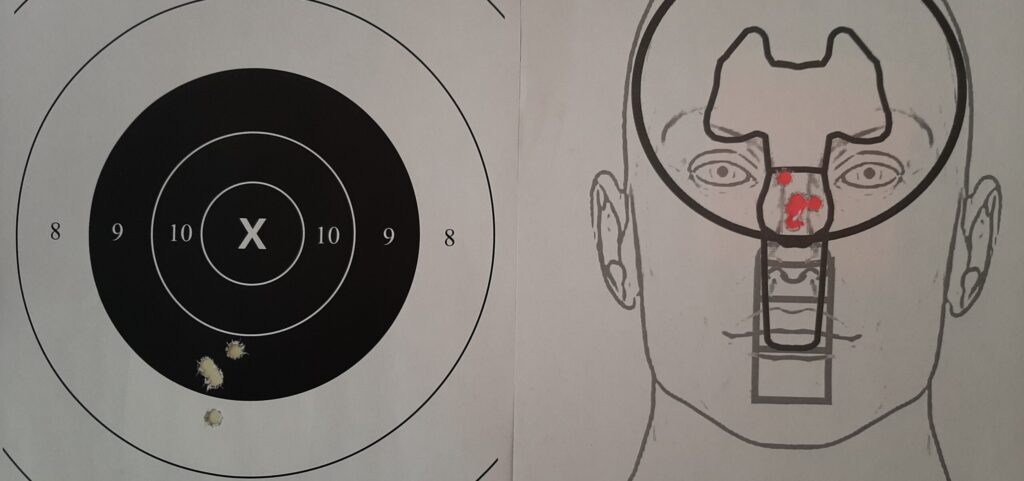
Mike had done me right while visiting with Steve Shields (Owner/Operator of the High Desert Cartridge Company) and got some ammo sent my way. Mr. Shields represents the .32 H&R Mag well: he offers a 100 grain XTP, a 100-gr. coated cast RNFP, and coated 98 gr. wadcutters for the .32 H&R Magnum and .32 S&W Long. Excellent bullet choices (I commend Shields for using coated bullets), ones which also promised to strike closer to the point of aim than lighter bullets through the Charter Arms.
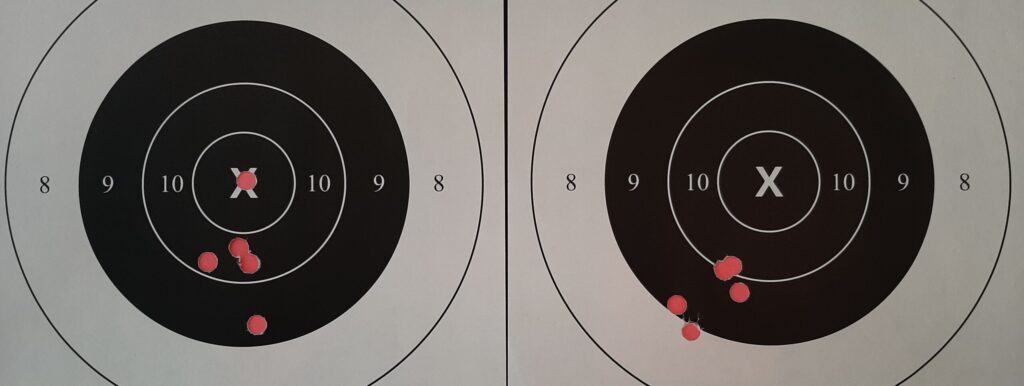
I made it back to the range in late January on a 31-degree afternoon. I shot offhand groups at 15 yards with the Professional as I checked velocity on these new loads. I decided to thumb cock the gun and take advantage of the Charter’s excellent single action break in the cold breezy conditions. The High Desert ammo performed well, with all loads slightly exceeding published velocities, despite the cold weather. The 100 gr. RNFP bested claimed velocities by almost 100 fps but shot the largest group. The 100 gr. XTP grouped well, a couple of inches below the point of aim. The 98 gr. wadcutter in both the .32 Long and .32 H&R displayed match level accuracy and hit just below the point of aim. My XTP handload gave good results as well, sending the 100-grain bullet to 977 fps and grouped nicely- a skosh below where the sights were held.
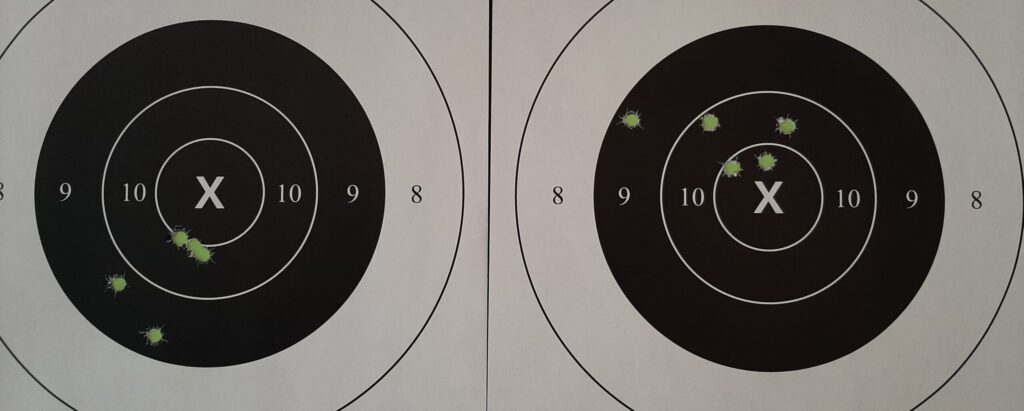
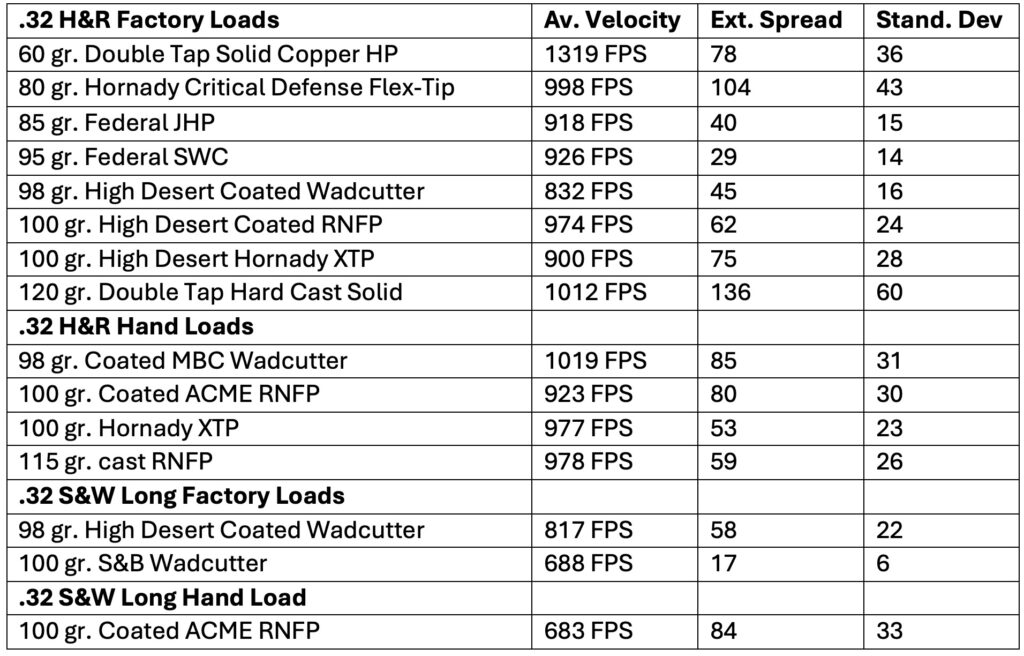
Lost Parts
Fifteen rounds into my testing, the cylinder latch retaining screw decided to jettison into the unknown. The pea gravel covered dirt range made locating it extremely unlikely. When I cleaned the Charter after the first time out, I noticed the screw was loose. I snugged it down but felt like its operation got stickier after that. I loosened it a bit and continued with dry practice and manipulation. I didn’t tighten it back up before heading to the range, so losing the screw is on me. To the Charter’s credit, the cylinder latch didn’t fall off, and it still functioned.
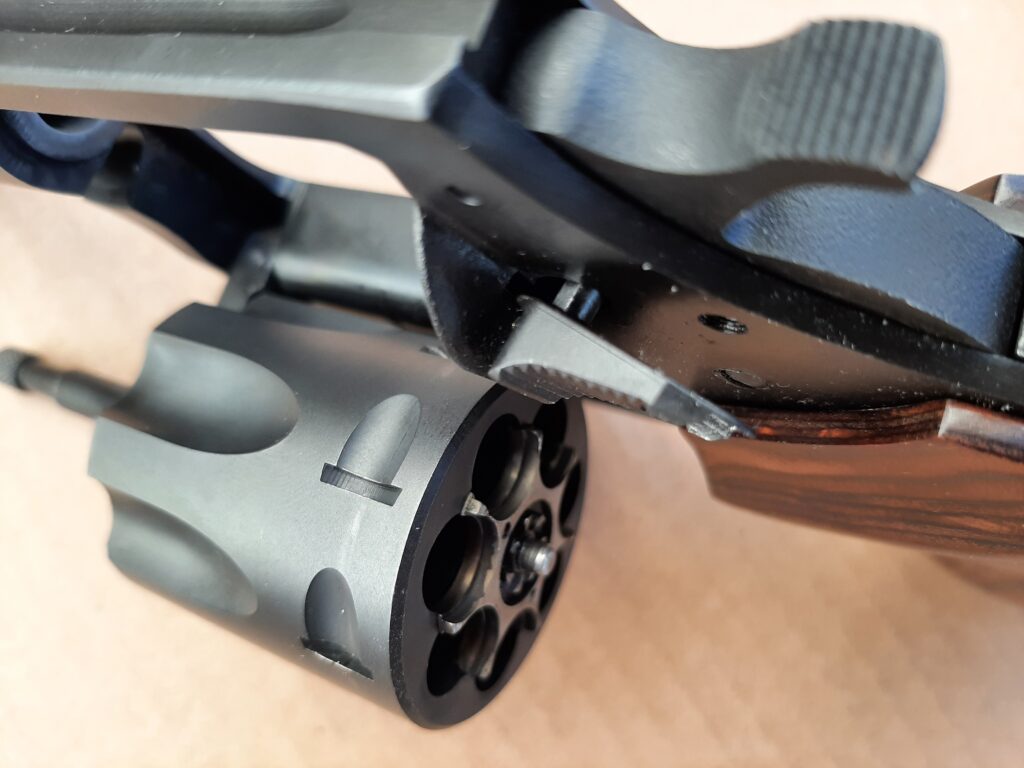
The rear of the part flared out at a shallow angle, but it stayed connected thanks to its design. I was able to press the back of the latch inwards and release the cylinder normally. I loaded and unloaded the cylinder several more times that day (and shot 40 more rounds) without losing the latch.
I shot a few more Double Tap 120 gr. HC at 20 yards, two impacted in the black and one just out into the 8-ring on a B-8. I shot a 5-round version of the Gunfighter test; 10 yards double action, strong hand only. The Professional shined on that drill with High Desert’s excellent .32 Mag wadcutter.
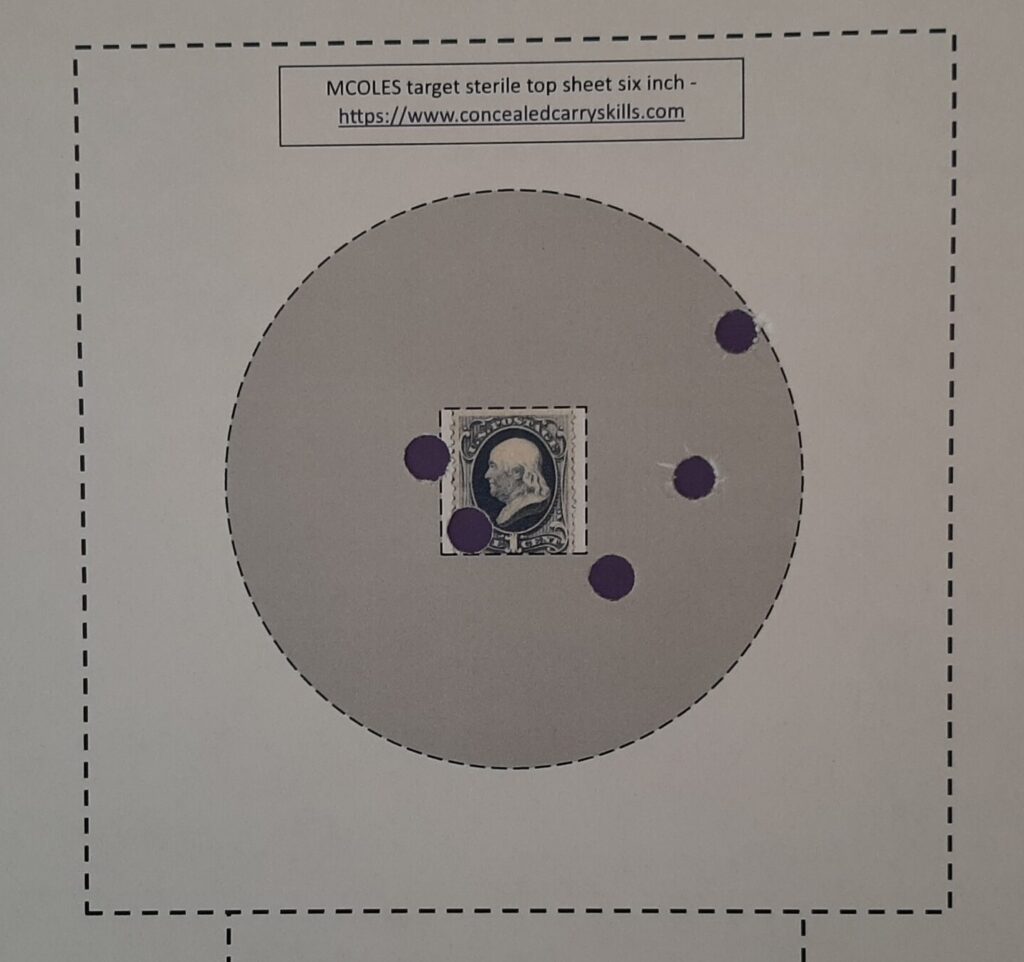
Back home, closer examination of the gun (and an exploded parts diagram) revealed the loss of several parts in the latch assembly. The diagram also showed that the cylinder latch release screw running through the center of the breach face was what kept the cylinder latch attached to the gun.
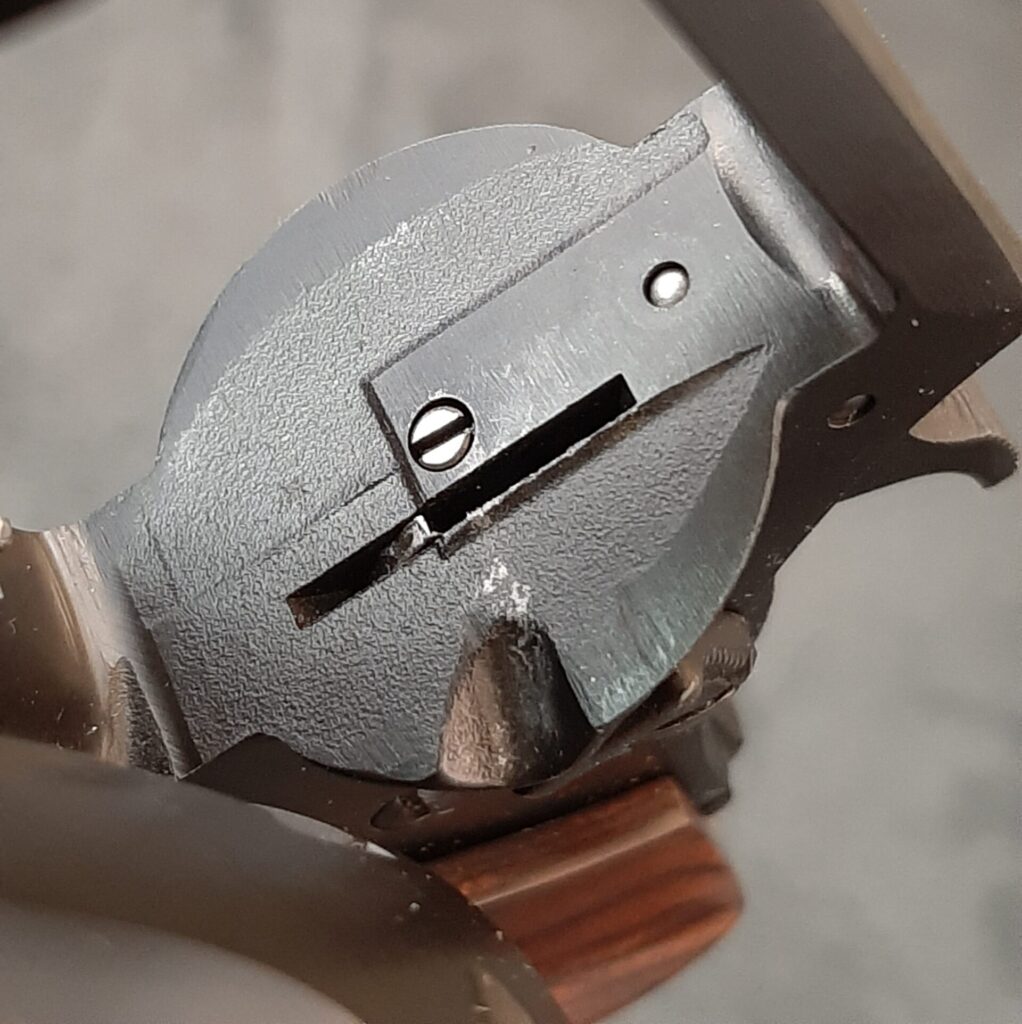
Shortly after I picked up the Pro from my FFL, I received a nice note in the mail from Charter Arms President Nick Ecker. He mentioned that if I needed anything to call and someone would actually answer the phone. Ecker enclosed a business card with his email address, so I emailed him on the weekend that the SHOT show was ending and explained my conundrum with the cylinder latch. I asked if he could possibly send some parts to get the gun running. A few days later, I got a call from a number with a 203-area code on my cell phone that I didn’t recognize. For some reason, I answered it. The caller identified himself as Nick from Charter Arms. He told me he’d read my email and that it was very unusual for a latch assembly to behave like that. I was compelled to fall on my sword and reiterate that it was my fault. Nick said he’d get the parts in the mail right away, along with a tool to make installation easier, and advised me to watch a video on their website for assistance. He’s the President of the company and he called me back directly and fixed my issue. That was pretty darn cool.

A few days later, I got an envelope in the mail with the needed parts and tool. I referred to the website and found the videos, watching the one on cylinder latch removal and reassembly. The video was very helpful as the Charter cylinder latch is much different than the part that serves the same function on an S&W. One of Charter’s gunsmiths, Tony, does an excellent job explaining and demonstrating the process. Charter Arms manufactures and sells the clever and practical tool that captures the cylinder latch plunger and spring. The formed sheet metal tool is worth its weight in gold when putting the assembly back together. When the parts were properly reassembled, the cylinder latch worked as intended and seemed less stiff than before.
Back in Business
I took the Professional out again in mid-February with a few .32 H&R handloads. Some 115-grain cast RNFP’s loaded on Alliant Power Pistol averaged 978 fps, hitting to the sights. I shot a cylinder full at 25 yards that gave a respectable group.
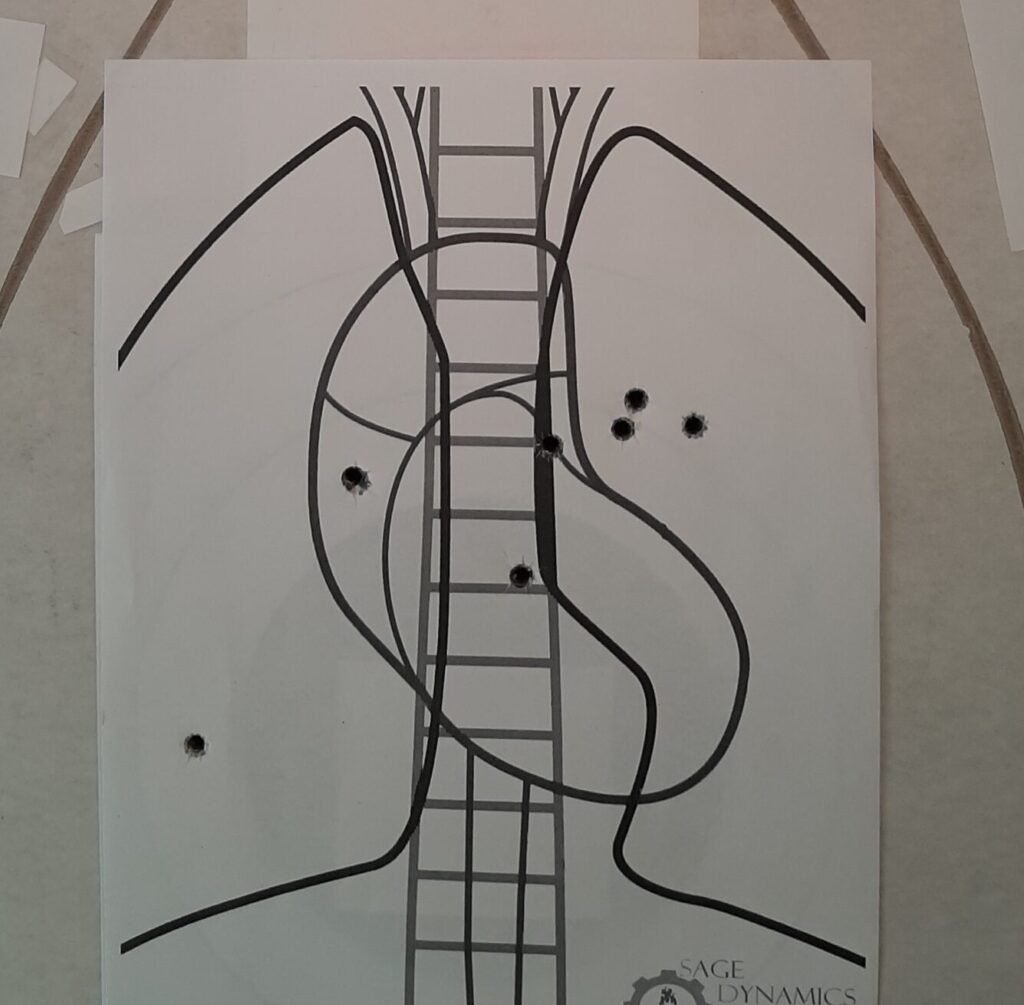
I then fired Dave Spaulding’s Fade Back Drill with some leisurely Trail Boss loads with 100 gr coated RNFP’s. The Professional kept all but one round within a 7.5” circle; strong work- until I remembered the drill was supposed to be shot on a 3×5 index card. Superimposing the card onto the group showed 5 rounds off but close- not bad for a little gun.
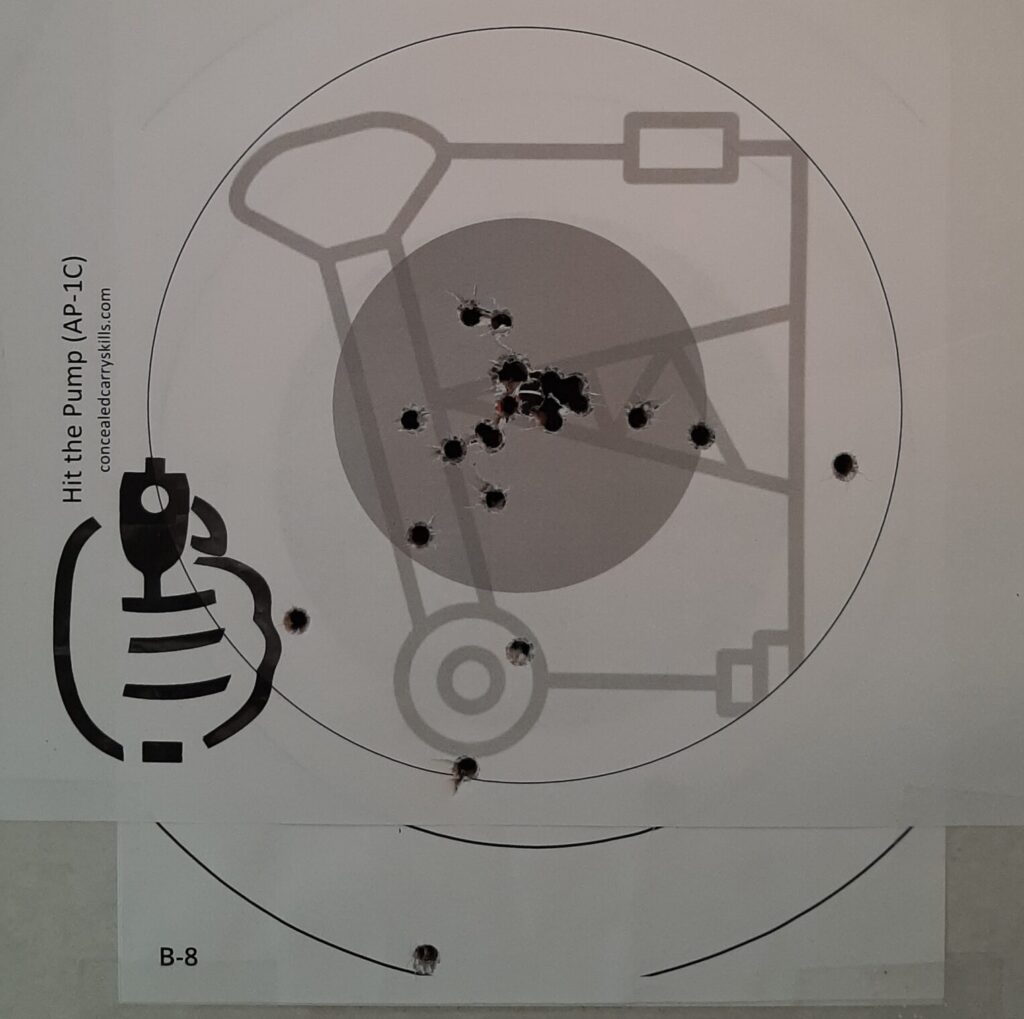
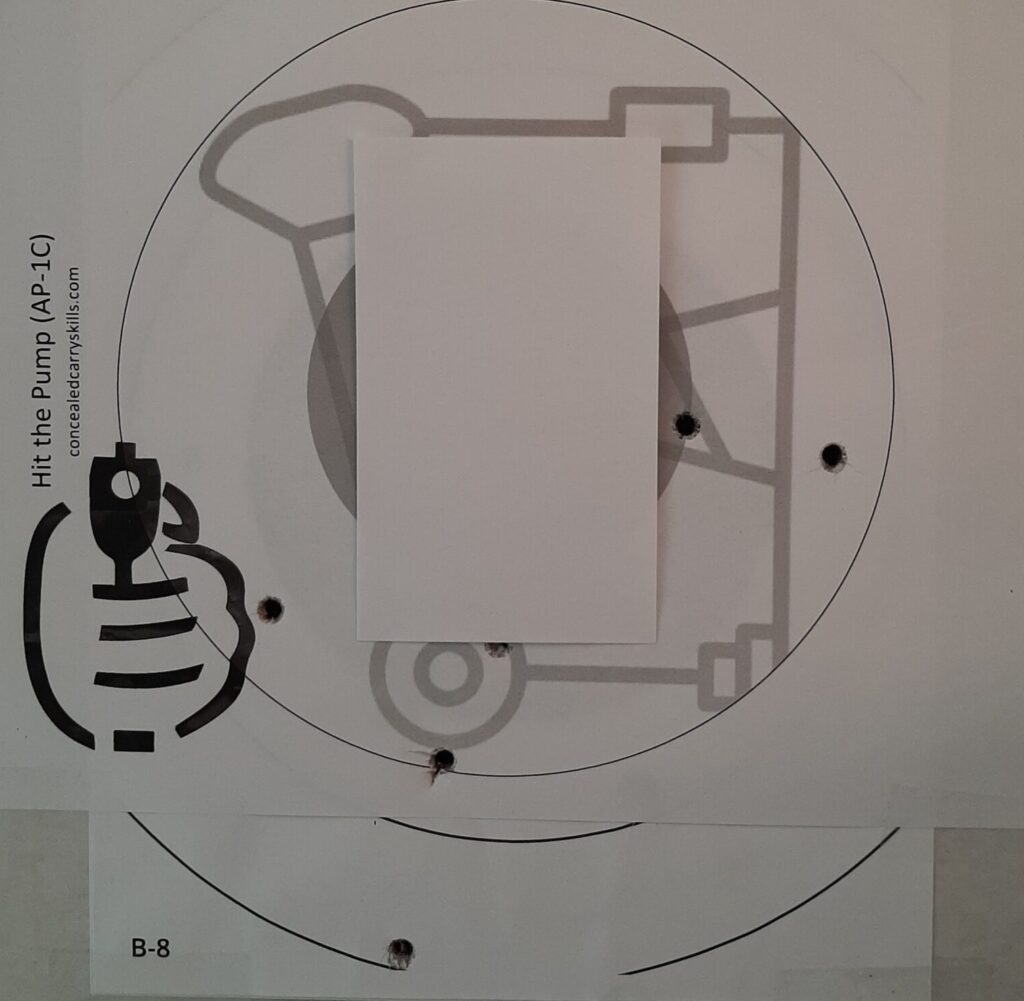
I fired exactly 200 rounds through the Professional in the time I had it, 147 .32 H&R’s and 53 .32 Longs. It gave 100% reliable ignition and ejection and was pleasant to shoot with everything fired through it. I cleaned it twice during the evaluation; bravo to the black nitride, it still looks like a brand-new gun. It also felt like it had broken in a bit, everything on the gun seemed smoother than when it was unfired.
Speed Loader Woes/Support Gear
One of the big questions when the Professional came out in 2019 was who was going to pony up and make a speedloader for the new gun. It was the only revolver out there with a 7 shot, .32 caliber cylinder with an outside diameter of 1.45”. Six years later, the Professional is still without a round body loader option. SpeedBeez and 5 Star manufacture loaders for the 7 round .32 GP100, but the Ruger’s cylinder is too wide to permit loaders for it to function with the smaller Charter (like trying to load a K frame Model 10 with an L frame loader). I contacted 5 Star and SpeedBeez, they both confirmed their loaders wouldn’t work with the Professional.

So, loading options for the Pro are strips and pouches. This isn’t a deal breaker, a Simply Rugged 2X32 pouch and an 8-shot Tuff Products Quick Strip give two full reloads. The onboard capacity of the gun somewhat offsets the need for a speedloader.
There are holsters out there for the Professional, Charter Arms sells some on their website. Galco makes their excellent Combat Master for the Professional, it does great for OWB carry. I located a few in the holster drawer that worked, too. The JM Custom Kydex AIWB rig that I have for a 3” K frame kept the lightweight Charter comfortably concealed.
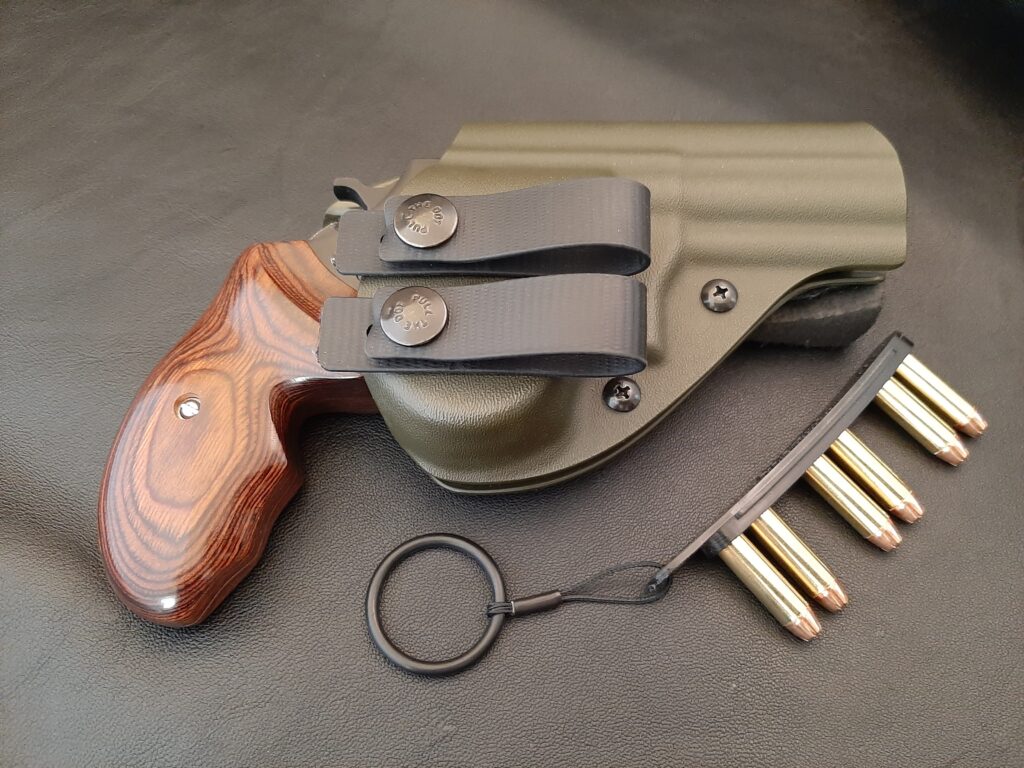
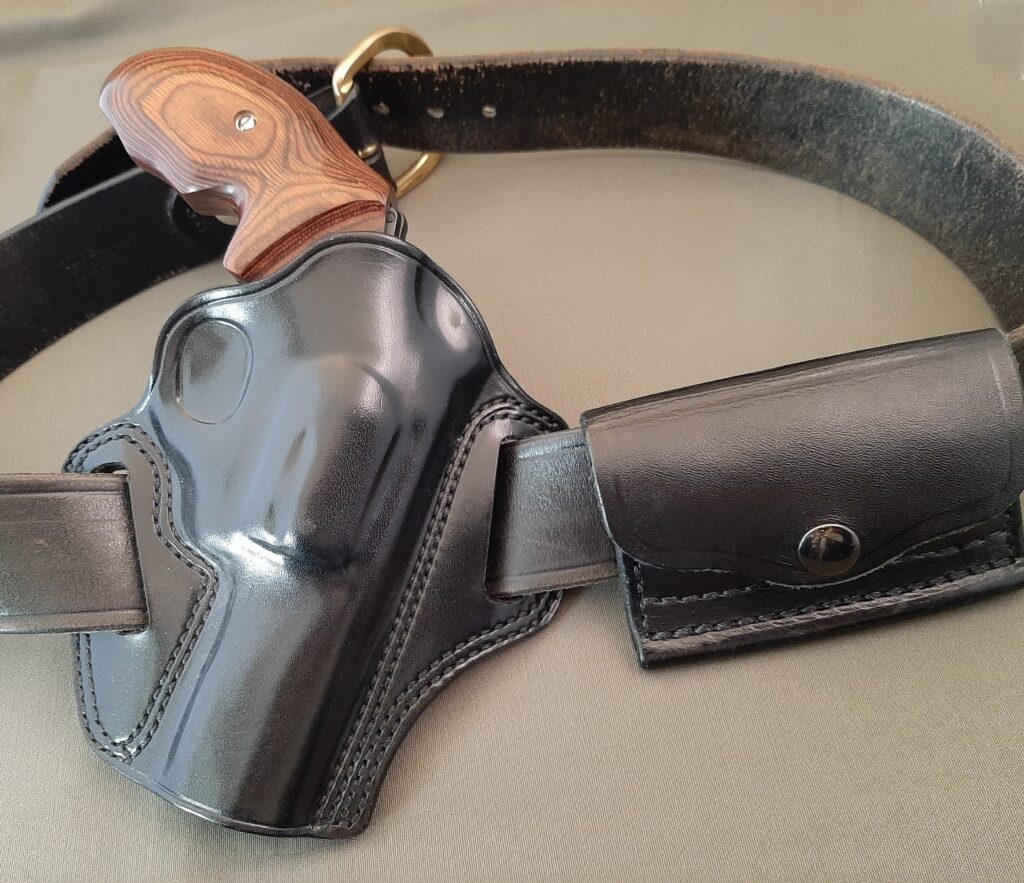
Closing Thoughts
I found the Professional to be a worthy, reliable self-defense gun that would double as a fine trail gun with heavy cast bullets. Loaded with the 120 grain Double Tap Hardcasts, it’s an exceptional “Kit Gun”. It has enough weight to be shot comfortably all day with the warmest .32 H&R loads, but it’s still light enough to be carry friendly.
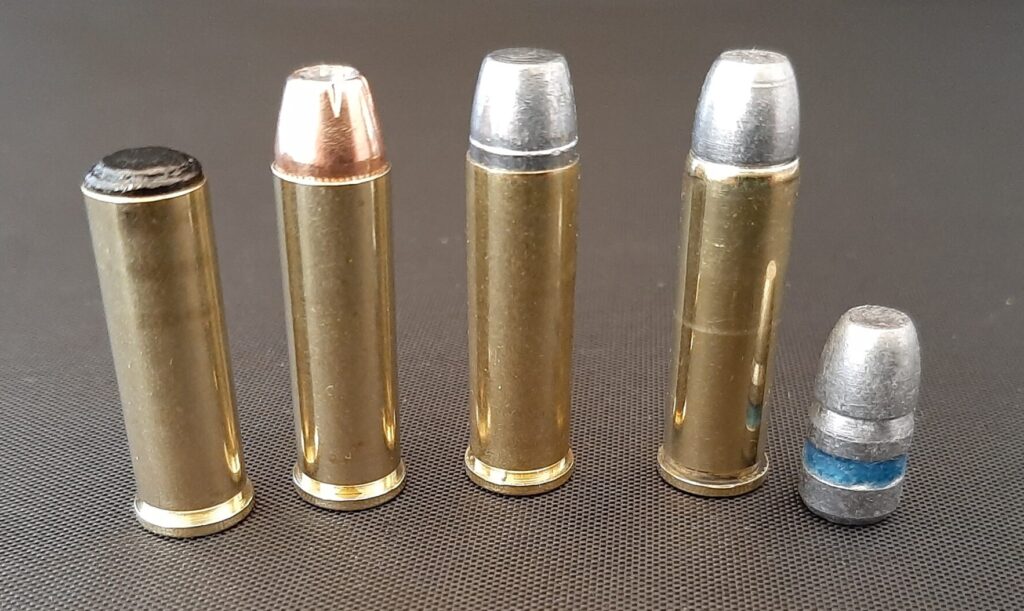
The double action trigger and sights are quite serviceable for that mission. The name implies that it was meant for a serious revolver practitioner; it will appeal to that group. The same features that make it shine for a “pro” allow it to be very user friendly for a tyro or inexperienced shooter. It would make a fine “fire extinguisher” gun for an elderly person who wanted a low maintenance, easy to shoot revolver for home defense. The 7th round in the cylinder is a nice advantage, however this gun may be deployed.
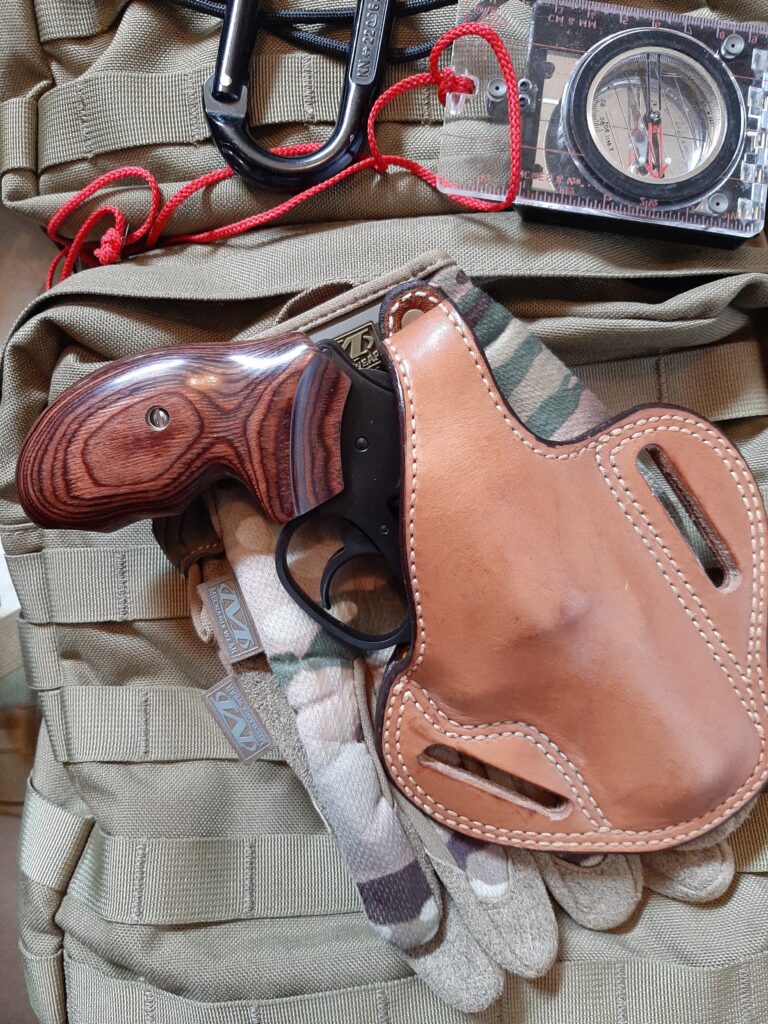
The black nitride finish stands up well to the elements and neglect, it also makes cleaning less of a chore. The Professional is also now offered in a six-shot .357 Magnum version, should you desire one. For me, this gun makes perfect sense in its original chambering. The .32 Professional retails for $518.00, a solid value for a revolver made in America by a company that stands behind it.

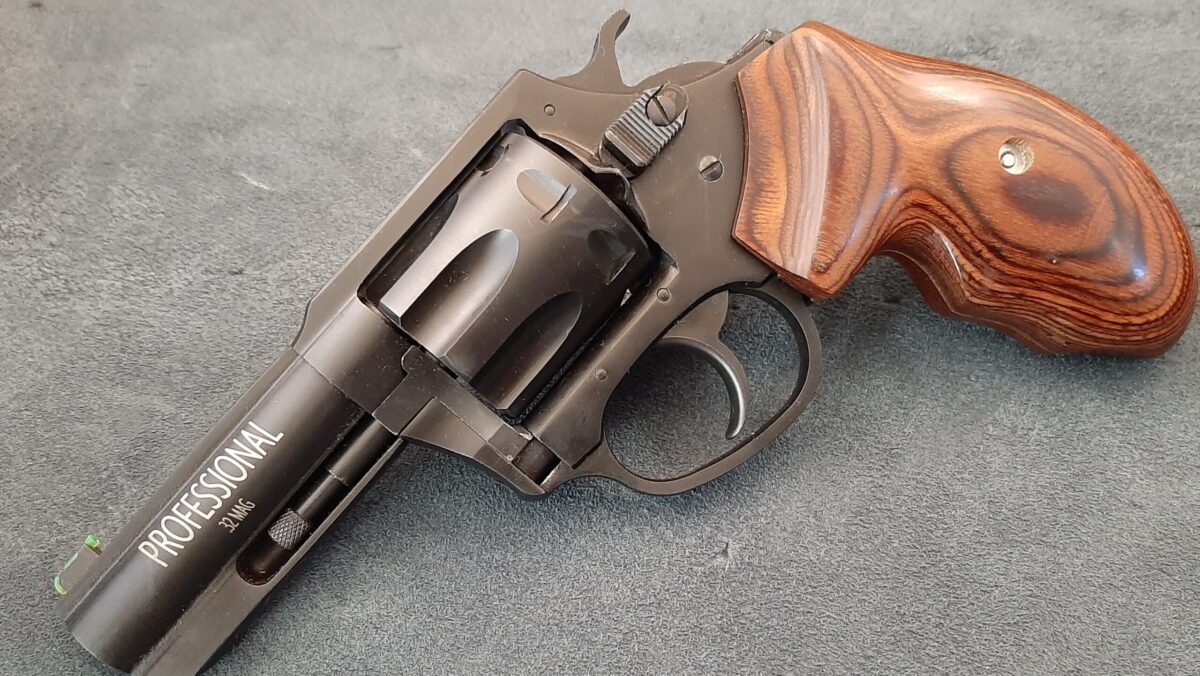
I bought one as soon as I could, which happened to be the stainless finish. I haven’t yet -knock wood- had cylinder latch issues, and the sights are about perfect for combat use. Mine has a bit of play in the grips, which does not affect function or accuracy. I suppose I could shim them with paper if I were worried about it… I find it a most pleasant piece, and would recommend it to anyone, new or seasoned, who wants a revolver.
Hey Riley, I concur with your recommendation. The cylinder latch issues were user inflicted in my case, I think. Normal preventative maintenance will do away with any concerns that way. That’s a nice way of saying “don’t be a moron like me- make sure your screws are snug before you head to the range.” 🙂
Cheers!
As always, Kevin…a great write up.
Several things resonated with me…I own several .44SPL Bulldogs and they have always served me well. While some knock the brand, I’ve found them to be utterly reliable, and though they’re not ‘polished safe queens’, they are ‘tools’ that I’ve trusted my life to for more than a decade. Carry wear just makes me more fond of them, whereas a scratch on my 69 Combat Magnum makes me cringe. I’ve returned one of my Bulldogs to Charter for some minor maintenance, and was amazed at the great, personalized service I received. Also, I’m inclined to shop local mom & pop places, and I always prefer to buy american made. I would encourage other with the same bent to consider a Charter Arms. They are certainly at home with my family of S&W’s and Rugers. Keep up the good work!
Kevin Massey
Thank you, Kevin. I agree with your well-spoken thoughts. Your Bulldogs may not be the first guns you send for Class A engraving and ivory grips, but they’re solid tools you can depend on for serious work. American made, and like yours, my experience with the company and the way they stand behind their guns was very encouraging. I got to coveting another .44 Bulldog while writing this one up, so I hope to have a review on one here before too long. Best regards, Sir!
Thanks for the write up. I was pleasantly surprised to see this gun has a smooth trigger instead of the serrated number that most of the Charter guns have used. I would love to see that be a change applied to the whole line up if it hasn’t been already.
You mentioned that this gun uses a hammer block, but my Charter uses a transfer bar. To the best of my knowledge, S&W’s and the Diamondback SDR are the only revolvers to use a hammer block. Was that just a misstatement, or did Charter change their design?
Either way, thanks for the testing and review.
Thank you, Greyson. The latest Bulldog I have recently handled also had a smooth trigger, so maybe that’s a change coming across the board. The nomenclature Charter uses for the “transfer bar” is hammer block, Part #42. On their website, Charter refers to it as their hammer block transfer bar safety system. Not a misstatement, just using their terminology for the part that serves both functions.
Interesting; I hadn’t realized that was Charter’s terminology. Good to know.
Kevin does great work, doesn’t he?
I’ve always looked past Charter Arms because their revolvers didn’t look as…”elegant”, as Colts, Smiths or even Rugers. That, and opinions on their quality seemed mixed. Having no one to teach me firearms growing up, I was heavily influenced by my seniors upon getting into firearms, and revolvers in this case. All too often I’ve heard things along the lines of, “Only Colt/Smith/Ruger matter”. One of my first snubnose revolvers was a steel-framed older Taurus 85 with the wood grips, that I ended up selling due to a mix of confusion/shame that I was owning “an inferior product”; even though it never gave me any issues. I’ve heard more than once things like, “FRIENDS DON’T LET FRIENDS BUY TAURUS” or “If you can’t afford a Smith you can’t afford a revolver”.
Needless to say, I’m at a point now where I’ve learned to largely shut those voices out. I know from experience that even the major manufacturers are not infallible. I’ve had two $1,000+ Smiths in the past year with QC issues that were, frankly, unacceptable to me for such an expensive wheelgun. What makes it worse is mediocre customer service. The two modern Taurus revolvers I own have been better, QC-wise, than any of the new Smiths I’ve owned; and the one time I did use Taurus customer service, I had no issues. My disappointment with Smith has led to me to start avoiding their revolvers and looking elsewhere. Thanks to sellers on GunBroker with very generous layaway, I’ve been able to get into a Colt Cobra, and MAY be able to get a Python later on. I used to look past Colts because of the price, as well as minor things like clockwise rotation and the pull style cylinder latch. Well, now that I’ve handled Colts, my opinion is that they ARE really nice, the clockwise rotation makes sense when you look up why it was done that way, and pulling instead of pushing can be learned with practice.
More importantly, I’ve also been looking in Charter Arms. I’ve done my research, including a video of a tour of Charter Arms. I believe the current head of Charter Arms is a good guy who treats his employees, and customers, right; which is reflected in the glowing reviews of Charter Arms customer service. Everything I’ve heard said that, if you have a problem with a Charter Arms, they will make it right. They stand behind their product, and I appreciate that. I only have so much disposable income for firearms; I can’t even buy most firearms without using layaway. So I have a better appreciation for manufacturers like Charter Arms who specifically cater to working-class people that want a reliable firearm they can actually afford. Yes, as I mentioned earlier, Colts ARE nice, and I feel like you’re getting your money’s worth; but not everyone can afford or will want to pay for a Colt, even with layaway or whatever.
I had recently decided that I wanted to get a “throwaway” revolver to keep in my car on work nights when I can’t carry. I got a Charter Arms Bulldog, both because I wanted a .44 Special (I’m not a Magnum person), and I looked at Charter Arms revolvers as disposable. However, when I actually handled it in the shop, I was impressed at how it felt. Lockup, timing, trigger pull, everything checked out. I’m planning on putting the Bulldog through its paces, and it may end up doing more than just being a car gun.
I want to support a good company that puts out a solid product, so I will be buying more from Charter Arms in the future. I’m looking into the Undercoverette, a small-frame .32 H&R, and maybe the Professional mentioned in this article. Since Charter Arms revolvers rotate clockwise, this will give me some consistency with the Colt Cobra, and any future Colts I may acquire. This may seem like a minor detail, but little things like this help me at the range when testing ammo.
My apologies for the long comment. I just had to get some of that stuff off my chest. Thank you for doing this review and giving Charter Arms a look.
Hey Axel, thank you for your thoughts on the subject. As you mentioned, cost doesn’t necessarily guarantee quality, and a company standing behind its product goes a long way. I’m with you on the quality of the new Colts, and that’s coming from a long time S&W user. I have found the Taurus guns I have shot to be solid; I carry them often. My experience with the Professional gave me that same impression and I wouldn’t hesitate to carry it or recommend it. There is a lot to be said for a working gun that’s both trustworthy and affordable. That’s how I used my first Bulldog, and I’m thinking about buying another one that will likely see more holster time than the first. Charge on, Sir!
I’ve never owned a Charter Arms revolver, but a late friend of mine did and it was .44 Special Bulldog. When he touched off a round from that piece he said it sounded “like the Hammer of God.”
You know, if you are going to carry a 5 shot snub, packing such a hammer makes pretty good sense. .44 Specials at even moderate velocities have been getting the job done for a long time. I’m thankful Charter Arms has kept them in their catalog and even expanded the variety of Bulldog models it makes. They are worth a hard look.
Kevin thank you for another excellent review. Your style of reviews should be the standard. Open, honest, detailed and always relatable.
With the sad loss of several gun writers of note it is a very good thing that talented writers like you are there to fill the void.
I am so tempted to add a Charter Arms Professional to the armory.
So many nice revolvers, so little time,money and room!
Thank you, Tony. I try to keep the standard set here by the good crew at RG. It has been a rough time that way, Sir. It seems like we have lost many of them in a short time frame, and they will be missed- Wiley Clapp being the latest. Hats off to his service as a U.S. Marine, Orange Co. Deputy, and longtime writer in the industry. The Professional would be a worthy addition, but I sure understand your dilemma!
The current renewed interest in .32H&R benefits owners of .327 Fed Mag firearms because it should increase the selection and availability of ammo for our .327s, and that’s good news!
Kevin,
Another exceptionally well done, and very detailed review. I know it must have been a stressful time having to put that many rounds down range. The stats on that S&B 100 grain wadcutter load is amazing in consistency.
I never experienced a cylinder release latch screw eject on my Charter Undercover, but I did have that happen on more than one S&W, so do not feel bad about that at all. It happens to all of us, unless you don’t shoot much. At least Nick Ecker was quick to get you back and running – which is more than can be said of some others (blink, blink)
Charter Arms was an innovator on several things we take for granted on revolvers. Most notably was the transfer bar interface between hammer and frame mounted firing pin. This would later be adopted on the Colt Mk III series, and all Ruger double and single action revolvers. They also pioneered the use of alloy frames in non structural parts, specifically the grip frame and trigger guard. This kept the weight down and allowed for another innovation, the one piece steel frame with no sideplate. Ruger would later use the solid frame design in their double action revolvers. Charter also pioneered the use of the frame mounted firing pin. This alleviated potential breakage, and again, was copied by Colt, Ruger and of late, S&W, among others.
My experience with Charter Arms goes back to 1972, when as a newly graduated baby trooper, we were told that we were to Pack Off Duty. A 5″ barreled .357 wasn’t going to cut it. On a starting salary of $600.00 a month (that’s not a typo), cash was thin, and I couldn’t afford a S&W Chief’s Special. I bought a Charter Arms Undercover .38 Special. It looked like a S&W, felt like a S&W, sort of, and was what I could afford that was American made. It was a first generation gun produced when founder Doug McClenahan and David Ecker ran the company. I was able to get it with their much fuller size Bulldog style grips. The price differential between the Charter and S&W enabled me to lay in a decent starting supply of .38 Special ammo (later to be reloaded a gazillion times) and I was all set. I already had a Lyman single stage press from my high school days of loading 8m/m Mauser rounds, so with the purchase of a set of Lyman .38/.357 loading dies, and a monthly allotment of a whopping $25.00 for primers, powder, I was all set. That left hitting up tire shops for old wheel weights to keep my bullet casting fed.
The Charter had noticeably better sights than the S&W – wide front blade and even wider rear sight cut. The front sight was very easy to pick up especially against darker backgrounds. The action was a bit stiff, but by the end of the first year, it was a totally different feel. I found that in addition to the thumb button release, pulling on the ejector rod also released the cylinder. I thought that was an interesting trick.
A few years later I bought a Charter Bulldog .44 Special, and carried that as my off duty gun for a while. Carrying was pleasant, shooting it wasn’t. It packed more punch on both ends over the .38, but in the long run, it wasn’t as concealable.
That little gun had a LOT of .38 Special rounds sent through it and never gave me a lick of trouble. It was a tough little gun. I know Charter went through a period of sinking quality control around 1990. Jeff Williams had bought out the company, renamed it CHARCO and proceeded to drive it over the cliff. I had bought another Charter Undercover around 1990, and it was nothing remotely as good as the first generation gun. CHARCO went bankrupt in the mid 90s, and the Ecker family bought what was left. Nick Ecker and his group were able to not just retake ownership and control, but re-establish the old school standards set out by Doug McClenahan and David Ecker.
The ones I saw at the 2025 NRA meeting were much improved over the ones I saw during the 2017 NRA meeting. The fit and finish was better, and you could tell they were focused on making the best bang for the buck.
If there is one downside to the company is that their website sucks, and general internet presence is scarce. Around north metro Atlanta, they’re akin to Vaporware – neither seen nor heard. They have a great potential to go head to head against a certain Brazilian gun maker and use the Made In USA to their advantage – but what do I know.
Thank you, S. Bond. You know, sometimes it really sucks to be me, the stress I endure writing up these guns, I’m glad you recognize that. Hah! Every round out of this Professional was a joy to shoot. Thank you for lending the insight of your long-time experience with Charter Arms, Sir. The innovations you mentioned are valuable. My dad’s Undercover was probably a little younger than your first, but it was similarly well built. He never had any drama with it, and he shot it fairly often. I thought the same thing about the ejector rod on the 3″ original Bulldog- it being exposed gave another way to get the cylinder open if the cylinder latch got monkeyed up. I’m glad Nick Ecker is running the ship now and has restored the pride and quality in the family business. There has been an uptick of Charter guns in my LGS, and the ones I’ve handled are akin to the ones you saw at the NRA meeting- good to go. Again, thank you for weighing in on this one, SB.
Agreed, Ricky J. I’m optimistic this surge of interest in the .32’s will eventually increase supply of both rounds in brick-and-mortar shops. The store I frequent has a little stock of both rounds (more .327 than .32 H&R) in defensive offerings, but rarely any practice/training ammo.
Kevin, thanks for the review. I am doing a review of this gun over on Snub Noir. I have the holster for it from Charter. Charter subs out their holsters to a mom & pop holster company, ML Custom. I am impressed with the holster and the gun. I’m around 140 rounds in and everything is as you say. I am shooting a little low with the lite bullets. I haven’t tried the heavier rounds yet but that is coming.
Hey Kevin, You’re welcome! It’s good to hear you are covering the gun over at Snub Noir. Thank you for mentioning the holsters, I had seen them on the website, but I neglected to mention them here. They looked good and were priced very reasonably. Charter Arms has a pretty decent array of grips, holsters and loaders in their online store. I had the same experience with light bullets, the sights on mine delivered heavier bullets (115-120 gr.) right to the point of aim. I’ll keep my eyes peeled for your review! Thanks again.
Really great write-up Sir! I’ve been curious about Charter Arms revilvers for quite some time. I had a Charter Undercover .38 Spec years ago and carried it as a back-up gun for a while, in my early patrol days when I couldn’t the Smith I wanted. Sadly, i let the Charter get away before I had a chance to spend some real time with it. I am sure it was a good one. I look forward to more of your insight! Thanks again!
Thanks, Mark. It’s interesting to hear of all the guys that did carry Undercovers as backups when they started. Charter Arms did a good job filling that niche for cops on a budget. Like that .44 Target Bulldog I had, you counted on them because it’s what you could afford. Charter Arms built affordable revolvers that proved to be worthy of the trust put in them. I think they still do.
I purchased the 432UC several months ago and am very happy with it. I am thinking of getting him a brother. Will Charter Arms be at the Revolver Fest in October?
That’s still in coordination, Bruce, but they’ve been invited and it looks like they will be. I’ll see you there.
I had a 2.5-in Bulldog for about 5 years, before selling it to a friend recently, that was absolutely problem free. It was the rare revolver of mine over the last decade that that that did not get a trigger job because its trigger was so good.
That’s good to hear, Steve. That old Target Bulldog I owned had a good trigger, the 2.5″ Bulldog I’ve been messing with of late has a decent trigger and it’s gotten better as I shoot and dry fire it. It’s a very shootable trigger, better than many guns I’ve handled lately with a much higher sticker price.